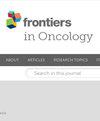巴基斯坦以患者和家属为中心的儿科癌症沟通功能
IF 3.5
3区 医学
Q2 ONCOLOGY
引用次数: 0
摘要
背景沟通是以患者和家属为中心的高质量护理的一个重要方面。美国开发的儿科癌症沟通模式定义了八种沟通功能。本研究的目的是探讨这些功能在巴基斯坦的相关性,作为了解文化在沟通中的作用的努力的一部分。材料和方法在两个主要癌症中心对 20 名临床医生和 18 名癌症患儿护理人员进行了半结构式访谈。访谈以乌尔都语或英语进行,必要时进行誊写和翻译。两名独立的编码员使用了与沟通模式相关的先验编码以及归纳得出的新编码。结果巴基斯坦的临床医生和护理人员讨论了之前确定的所有八种沟通功能的重要性,包括:信息交流、决策、管理不确定性、促进家庭自我管理、回应情绪、支持希望、提供验证和建立关系。这些功能的可操作性受到巴基斯坦文化背景的影响。例如,信息交流包括消除先入为主的观念和社区神话的重要性,而管理不确定性则包括对宗教和基于信仰的应对方法的强烈提及。这些研究结果支持在不同的儿科肿瘤环境中使用这一功能性沟通模式,并强调了信任的重要性。对这些功能进行文化敏感的操作,可以为调整工具以衡量沟通和干预措施提供信息,从而支持癌症患儿家长的需求。本文章由计算机程序翻译,如有差异,请以英文原文为准。
Functions of patient- and family-centered pediatric cancer communication in Pakistan
BackgroundCommunication is an essential aspect of high-quality patient- and family-centered care. A model for pediatric cancer communication developed in the United States defined eight communication functions. The purpose of this study was to explore the relevance of these functions in Pakistan as part of an effort to understand the role of culture in communication.Materials and methodsSemi-structured interviews were conducted with 20 clinicians and 18 caregivers of children with cancer at two major cancer centers. Interviews were conducted in Urdu or English and transcribed and translated as necessary. Two independent coders used a priori codes related to the communication model as well as novel codes derived inductively. Thematic analysis focused on operationalization of the functional communication model.ResultsClinicians and caregivers in Pakistan discussed the importance of all eight communication functions previously identified including: information exchange, decision-making, managing uncertainty, enabling family self-management, responding to emotions, supporting hope, providing validation , and building relationships. The operationalization of these functions was influenced by Pakistani cultural context. For example, information-exchange included the importance of addressing preconceptions and community myths, while managing uncertainty included strong references to religion and faith-based coping. Essential to all eight functions was trust between the family and the medical team.DiscussionThese findings support the use of this functional communication model in diverse pediatric oncology settings and emphasize the importance of trust. Culturally sensitive operationalization of these functions could inform the adaptation of tools to measure communication and interventions aimed at supporting the needs of parents of children with cancer.
求助全文
通过发布文献求助,成功后即可免费获取论文全文。
去求助
来源期刊

Frontiers in Oncology
Biochemistry, Genetics and Molecular Biology-Cancer Research
CiteScore
6.20
自引率
10.60%
发文量
6641
审稿时长
14 weeks
期刊介绍:
Cancer Imaging and Diagnosis is dedicated to the publication of results from clinical and research studies applied to cancer diagnosis and treatment. The section aims to publish studies from the entire field of cancer imaging: results from routine use of clinical imaging in both radiology and nuclear medicine, results from clinical trials, experimental molecular imaging in humans and small animals, research on new contrast agents in CT, MRI, ultrasound, publication of new technical applications and processing algorithms to improve the standardization of quantitative imaging and image guided interventions for the diagnosis and treatment of cancer.
 求助内容:
求助内容: 应助结果提醒方式:
应助结果提醒方式:


